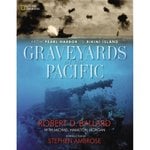Well we were talking about the wrecks of the Bismarck, Hood, Yamato and Graf Zeppelin in other threads. This topic greatly interests me so I started this thread so that people can post info and links to sites to individual ship wreck sites or to wrecks in general.
Whether it is U-Boot, Battleship, Destroyer, Aircraft Carrier, US, British, Japanese, French, or German, post the info here and we can discuss them.
Whether it is U-Boot, Battleship, Destroyer, Aircraft Carrier, US, British, Japanese, French, or German, post the info here and we can discuss them.


